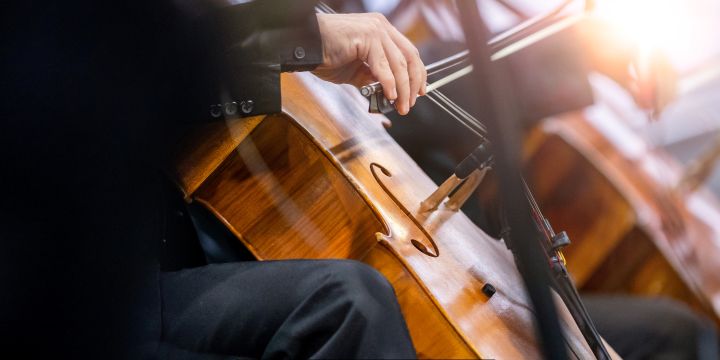Cello players, whether beginners or seasoned professionals, often encounter various challenges that can affect the instrument’s performance. Among these challenges, issues related to the bridge are particularly common. The bridge, a crucial component of the cello, serves as the connection between the strings and the body of the instrument, playing a vital role in sound production.
When problems arise with the bridge, they can lead to diminished sound quality, intonation issues, and even physical damage to the cello itself. Therefore, understanding how to troubleshoot bridge-related problems is essential for any cellist aiming to maintain their instrument in optimal condition. Troubleshooting a cello’s bridge requires a keen eye and a basic understanding of the instrument’s anatomy.
Players must be able to identify symptoms of potential issues and know how to address them effectively. This article will delve into one of the most common problems faced by cellists: a warped bridge. By exploring the symptoms, causes, prevention methods, and repair techniques associated with a warped bridge, cellists can ensure their instruments remain in top shape, allowing them to focus on their music rather than on technical difficulties.
Key Takeaways
- Warped bridge symptoms include buzzing or rattling strings, difficulty in tuning, and uneven string height.
- Causes of bridge warping can include changes in humidity, improper string tension, and poor quality materials.
- To prevent bridge warping, store the cello in a stable environment, use a humidifier, and regularly check string tension.
- Steps to fix a warped bridge include loosening the strings, straightening the bridge, and re-tuning the cello.
- Seeking professional help is recommended if the bridge warping is severe or if you are unsure of how to fix it yourself.
Identifying Warped Bridge Symptoms
Changes in String Action
One of the most signs is a change in the action of the strings. If the strings appear to be too high or too low from the fingerboard, it may indicate that the bridge has lost its proper shape. This misalignment can make playing more challenging and uncomfortable for the musician.
Imbalance in Sound Production
Another symptom of a warped bridge is an imbalance in sound production. A well-aligned bridge allows for even distribution of vibrations across the cello’s body, resulting in a rich and balanced tone. However, if the bridge is warped, certain strings may sound muted or overly bright compared to others. This inconsistency can be frustrating for players who strive for a harmonious sound.
Visual Inspection
Additionally, visual inspection can reveal signs of warping; if the bridge appears to lean to one side or has an unusual curvature, it is likely time for further investigation.
Causes of Warped Bridge
Understanding the causes of a warped bridge is crucial for effective prevention and repair. One of the primary factors contributing to bridge warping is environmental changes. Cello wood is sensitive to fluctuations in temperature and humidity.
When exposed to extreme conditions, such as excessive heat or dryness, the wood can shrink or expand, leading to structural changes in the bridge. This is particularly common in regions with significant seasonal variations or in environments where climate control is lacking. Another common cause of warping is improper handling or maintenance of the instrument.
For instance, if a cellist frequently applies excessive pressure while playing or fails to store the instrument correctly, it can lead to undue stress on the bridge. Additionally, neglecting regular maintenance tasks, such as cleaning and checking for wear and tear, can exacerbate existing issues. Understanding these causes allows cellists to take proactive measures to protect their instruments from warping.
How to Prevent Bridge Warping
| Preventive Measures | Effectiveness |
|---|---|
| Use proper seasoning techniques for wood | High |
| Apply protective coatings or sealants | Medium |
| Monitor and control humidity levels | High |
| Use high-quality, well-dried lumber | High |
| Implement proper bridge design and construction techniques | High |
Preventing bridge warping involves a combination of proper care and environmental management. One of the most effective strategies is maintaining a stable environment for the cello. This includes storing the instrument in a climate-controlled space where temperature and humidity levels are consistent.
Using a hygrometer can help monitor these conditions, ensuring that they remain within an optimal range for wooden instruments. Regular maintenance is equally important in preventing warping. Cellists should develop a routine that includes checking the bridge for any signs of misalignment or wear.
Additionally, ensuring that the strings are not overly tight can help reduce stress on the bridge. When transporting the cello, using a well-padded case can protect it from physical shocks that might lead to structural damage. By taking these preventive measures, cellists can significantly reduce the risk of encountering a warped bridge.
Steps to Fix a Warped Bridge
When faced with a warped bridge, cellists have several options for addressing the issue. The first step is to assess the extent of the warping. If it appears minor and does not significantly affect playability or sound quality, some players may choose to make small adjustments themselves.
This could involve gently reshaping the bridge using specialized tools designed for string instruments. However, caution is essential; improper handling can lead to further damage. For more severe cases of warping, seeking professional assistance is advisable.
A skilled luthier can accurately diagnose the problem and recommend appropriate solutions. This may involve reshaping or replacing the bridge entirely. A luthier will also ensure that any adjustments made are in line with the specific requirements of the cello, taking into account factors such as string height and curvature.
Ultimately, addressing a warped bridge promptly can prevent further complications and restore optimal performance.
Seeking Professional Help
While some cellists may feel confident tackling minor repairs on their own, there are instances when professional help is necessary. A warped bridge can be indicative of underlying issues that require expert attention. Luthiers possess specialized knowledge and experience that enable them to assess not only the bridge but also other components of the cello that may be affected by warping.
When seeking professional help, it is essential for cellists to choose a reputable luthier with experience working on cellos specifically. A skilled luthier will not only address the immediate problem but also provide insights into maintaining the instrument’s overall health. They may offer recommendations for future care and maintenance practices tailored to the individual cellist’s playing style and environmental conditions.
Maintenance Tips for Cello Bridges
Maintaining a cello’s bridge is an ongoing process that requires attention and care. Regular inspections should be part of every cellist’s routine; checking for signs of warping or wear can help catch potential issues before they escalate. Additionally, cleaning the bridge regularly with a soft cloth can prevent buildup of rosin dust and dirt that may affect its performance.
Another important aspect of maintenance involves monitoring string tension. Cellists should ensure that their strings are not overly tight, as excessive tension can place undue stress on the bridge and contribute to warping over time. When changing strings, it’s advisable to do so gradually rather than all at once; this approach helps maintain balance and reduces strain on the bridge.
Importance of Regular Maintenance
In conclusion, regular maintenance of a cello’s bridge is vital for preserving its sound quality and playability. By understanding how to identify symptoms of warping, recognizing its causes, and implementing preventive measures, cellists can significantly enhance their instrument’s longevity and performance. Whether through self-care or seeking professional assistance when necessary, maintaining a healthy bridge ensures that musicians can focus on their artistry without being hindered by technical difficulties.
Ultimately, investing time and effort into maintaining a cello’s bridge pays off in terms of improved sound quality and overall playing experience. As with any musical instrument, attention to detail and proactive care are key components in achieving excellence in performance. By prioritizing regular maintenance practices, cellists can enjoy their instruments fully while minimizing potential issues related to warping and other common challenges associated with this beautiful stringed instrument.
If you’re a musician who plays the cello, you know how important it is to keep your instrument in top condition. One common issue that cellists may encounter is a warped bridge, which can affect the sound and playability of the instrument. To learn more about how to properly maintain your cello and prevent issues like a warped bridge, check out this article on The Essential Guide to Regular Plumbing Maintenance for Homeowners. This comprehensive guide offers valuable tips and advice for homeowners looking to keep their plumbing systems in good working order, drawing parallels to the importance of regular maintenance for musical instruments like the cello.
FAQs
What is a warped bridge on a cello?
A warped bridge on a cello refers to a bridge that has become misshapen or distorted, affecting the instrument’s playability and sound quality.
What causes a cello bridge to warp?
A cello bridge can warp due to changes in humidity and temperature, improper installation, or excessive pressure from the strings.
How does a warped bridge affect the cello’s performance?
A warped bridge can cause the strings to be unevenly spaced, affecting the instrument’s intonation and playability. It can also impact the sound quality and projection of the cello.
Can a warped cello bridge be repaired?
Yes, a warped cello bridge can often be repaired by a luthier. They can reshape the bridge or replace it with a new one to restore the cello’s playability and sound quality.
How can I prevent my cello bridge from warping?
To prevent a cello bridge from warping, it’s important to store the instrument in a stable environment with consistent humidity and temperature. Additionally, regular maintenance and proper string tension can help prevent bridge warping.




